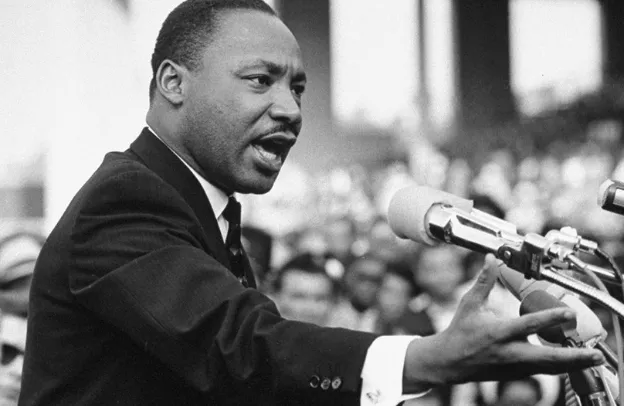The Power of Hypnosis for Storytelling: Unleashing the Business Potential

In today’s ever-changing world of business, you would have heard that to stand out and leave a lasting impact, storytelling is a powerful tool at your disposal. However, what if I told you that there’s a secret weapon to elevate your storytelling skills to unprecedented levels? Welcome to the magic of hypnosis for storytelling – a game-changer for entrepreneurs seeking to build influence, captivate audiences, and boost their bottom line.
The Art of Hypnotic Storytelling:
Hypnotic storytelling is not about swinging pocket watches or mysterious trance-like states; rather, it’s a sophisticated technique that taps into the power of the subconscious mind.
Hypnotic storytelling is a sophisticated narrative technique that leverages principles from hypnosis to captivate and influence an audience on a subconscious level. It goes beyond conventional storytelling by incorporating elements such as emotional resonance, neuro-linguistic programming, and sensory engagement to create a deeply immersive experience.
In the world of business, hypnotic storytelling is a strategic approach where entrepreneurs craft narratives that not only convey their brand messages but also establish a profound connection with the audience.
By strategically varying pacing, utilizing impactful pauses, and engaging the senses, hypnotic storytelling can guide listeners into a receptive state, where messages are absorbed and retained at a subconscious level. This leads to increased influence, brand differentiation, and enhanced business outcomes. In more practical terms, this can be effective in the following ways:
Creating Emotional Resonance:
Hypnotic storytelling excels at eliciting powerful emotions, and emotions are the gateway to the subconscious mind. By crafting narratives that evoke joy, empathy, excitement, or any other strong emotion, storytellers can establish a deep and lasting connection with the audience.
This can be very powerful in business if correctly applied because emotions can bypass the conscious mind’s filters and directly impact the subconscious. When a story resonates emotionally, it becomes memorable and ingrained in the audience’s psyche, influencing their perceptions and attitudes on a subconscious level.
Utilizing Neuro-Linguistic Programming (NLP):
NLP is a foundational element of hypnotic storytelling that leverages language patterns and cues to influence the subconscious mind.
In case you are new to the term, Neuro-Linguistic Programming (NLP) is a psychological and communication methodology that explores the relationships between neurological processes, language, and behavioral patterns acquired through experience.
Developed in the 1970s, NLP involves the use of language patterns, visualizations, and other communication techniques to reframe perceptions, overcome limiting beliefs, and facilitate positive change in individuals.
In essence, NLP serves as a practical tool for enhancing communication, understanding thought processes, and promoting personal and professional development by tapping into the interplay between the mind, language, and behavior.
By incorporating persuasive language, metaphors, and subtle cues, storytellers can guide the audience’s thought processes and perceptions. This is for the fact that NLP techniques are designed to communicate with the subconscious, thereby allowing the storyteller to embed key messages and ideas in a way that resonates at a deeper level.
This creates a more profound impact on the audience’s beliefs and attitudes, and by so doing influences their decision-making processes without them consciously realizing it. To be effective, you will need to engage the senses of your audience or listeners. Let’s see to that below.
Engaging the Senses:
The subconscious mind is highly receptive to sensory experiences. Therefore, hypnotic storytelling goes beyond mere words by engaging the audience’s senses – sight, sound, touch, taste, and smell.
By painting vivid and sensory-rich imagery through storytelling, you, as a storyteller can transport the audience to a world where they can mentally experience the details of the narrative. This sensory immersion facilitates a more profound connection with the story and its underlying messages. Think for a moment about what that can mean for your marketing messages.
As the subconscious mind processes these sensory inputs, it strengthens the retention and impact of the story, making it a more effective tool for communication and persuasion. But remember that you need a good rapport with your audience to succeed. Yes, that is so true as we shall discuss below.
Establishing Rapport:
Hypnosis begins with building a strong rapport with your audience. As an entrepreneur, connecting with your customers emotionally is paramount. For more effectiveness, you can start your story by identifying common experiences, struggles, or desires that resonate with your target audience. By establishing this initial connection, you are laying the groundwork for a more receptive audience.
In business, where trust and relatability are crucial, building rapport ensures that the audience feels understood, valued, and emotionally connected to the storyteller. This connection not only enhances the engagement level but also primes the subconscious mind to be more receptive to the persuasive elements of the story. This is what ultimately leads to a more profound and lasting impact on the audience’s perceptions and decisions.
Make sure to immerse your audience in a vivid sensory experience by incorporating rich details that appeal to sight, sound, touch, taste, and smell. Now, here are two highly effective ways of engaging the senses during hypnotic storytelling:
Vivid Descriptions and Imagery:
Paint a rich and detailed picture through vivid descriptions that appeal to the audience’s imagination. Engage multiple senses by incorporating sensory details related to sight, sound, touch, taste, and smell.
By providing a sensory-rich environment within the narrative, storytellers can transport the audience to a world where they can mentally experience and feel the story. This immersive quality deepens the connection with the narrative, making it more memorable and impactful on a subconscious level.
Audiovisual Elements and Multimedia:
Another highly effective way of engaging the senses during hypnotic storytelling is Audiovisual Elements and Multimedia. So, consider leveraging the power of audiovisual elements to stimulate the senses. Incorporate carefully chosen sounds, music, or even background visuals that complement the story and evoke specific emotions.
In presentations or digital storytelling, use multimedia formats to create a multi-sensory experience. The combination of compelling visuals, evocative sounds, and perhaps even interactive elements can enhance the hypnotic effect. If correctly applied, they can help to capture the audience’s attention and ensure a more profound engagement with the storytelling experience.
Incorporating Pacing and Rhythm:
Just like in traditional hypnosis, pacing and rhythm are crucial in maintaining engagement. So, consider varying the pace of your storytelling to keep your audience on their toes. Use pauses strategically to emphasize key points, creating a rhythm that draws them deeper into the narrative. For more effectiveness, pay attention to the following tips:
Varying Speed and Intensity:
Alter the pace of your storytelling to maintain a dynamic and engaging experience. Speed up during moments of excitement or tension to heighten emotions, and then slow down during more reflective or impactful scenes to allow the audience to absorb and contemplate.
This variation in speed creates a rhythm that captures attention and keeps the audience invested in the narrative.
Strategic Pauses for Emphasis:
Integrate strategic pauses at key points in your storytelling to emphasize important messages or build anticipation.
Pauses provide a moment of reflection for the audience and can create a sense of suspense, allowing them to mentally process and anticipate the unfolding story. This intentional use of silence can be a powerful tool to underscore critical points, making them more memorable and impactful.
Utilizing Repetition and Patterns:
Incorporate repetition and consistent patterns in your storytelling to establish a hypnotic rhythm. Repetition can reinforce key themes or messages, embedding them in the audience’s subconscious.
Consistent patterns, such as recurring motifs or storytelling structures, create a sense of familiarity that can be comforting and compelling. These rhythmic elements can contribute to a cohesive and hypnotic storytelling experience. It guides the audience through the narrative with a sense of continuity and predictability.
The Business Impact:
One of the reasons for using storytelling in business is to create a more compelling and credible narrative about products or services. For entrepreneurs, the power of hypnotic storytelling lies in its ability to influence decisions, build brand loyalty, and drive sales. Having said that, the following needs to be put into consideration as some of the business advantages of hypnotic storytelling:
Enhanced Brand Differentiation:
Hypnotic storytelling enables businesses to create a unique and memorable narrative that sets them apart from competitors. By engaging the audience on a deep emotional level and embedding key messages in the subconscious mind, businesses can establish a distinctive brand identity.
This differentiation is a competitive advantage, as consumers are more likely to remember and connect with a brand that has successfully captivated them through hypnotic storytelling.
Increased Influence and Persuasion:
The subtle techniques employed in hypnotic storytelling, such as neuro-linguistic programming and emotional resonance, enhance the power of persuasion. Businesses can influence consumer attitudes, perceptions, and decision-making processes on a subconscious level.
Whether it’s encouraging product adoption, promoting a specific brand image, or driving sales, the persuasive impact of hypnotic storytelling can significantly increase a business’s ability to shape consumer behavior in alignment with its objectives.
Stronger Customer Engagement and Loyalty:
Hypnotic storytelling fosters a deeper connection with the audience by creating immersive and emotionally resonant experiences. When customers are engaged at a subconscious level, they are more likely to form a lasting bond with the brand.
This increased emotional connection translates into customer loyalty, repeat business, and positive word-of-mouth marketing. Businesses that master hypnotic storytelling can build a community of loyal customers who not only appreciate the products or services but also identify with the brand’s story on a personal and emotional level.
By integrating these techniques into your communication strategy, you can differentiate your brand, establish a compelling narrative, and ultimately increase your influence and revenue.
Conclusion:
In the competitive landscape of business, mastering the art of storytelling is no longer an option – it’s a necessity. By incorporating hypnotic storytelling techniques into your repertoire, you can elevate your brand’s narrative to new heights and earn more.
Unleash the power of hypnosis for storytelling, captivate your audience, and watch as your influence and success soar in the world of business.






